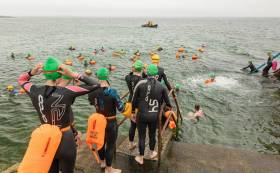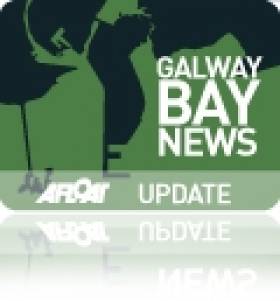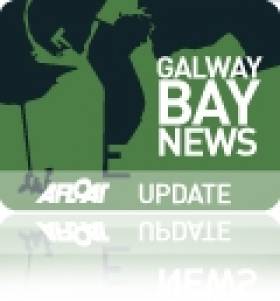Displaying items by tag: Frances Thornton Memorial Galway Bay Swim
The Frances Thornton Memorial Galway Bay Swim in aid of Cancer Care West returns to the waters of Galway Bay this July.
Now in its 14th year, the now sold-out event on Saturday 20 July will see close to 130 swimmers taking part this year in one of Ireland's biggest and longest one-day swims.
Starting from Aughinish in Co Clare and finishing at Blackrock diving tower in Salthill, where the recent swim ban has just been lifted, the swim is a distance of roughly 13 kilometres — if you swim in a straight line.
This year there will be 69 solo swimmers as well as 65 relay swimmers taking part in teams of two, three and four.
Since the swim began 14 years ago, 740 people have swam the bay and this year again it will be a mixture of swimmers who have completed the swim every year and complete novices.
Last year’s swim raised over €100,000 for Cancer Care West and it’s hoped to beat that target this year.
The monies raised will help fund the expansion of support services for cancer patients, including a counselling service for children and a dedicated gym rehabilitation space for cancer patients.
Safety is a priority for the swim, and each year the event reaches out to the maritime community in the west to support the swim through boat support.
Ciaran Oliver of Galway Bay Boat Tours and Oranmore Maree Coastal Rescue are helping out again this year.
Each swimmer needs a boat to follow and track their swim, so organisers are again this year asking any boat owner to get in contact with the hope they can volunteer their services on the day.
The most suitable boat is a 5m RIB with a 50HP engine or equivalent.
“Ideally we are looking for motor boats, pleasure crafts between five and seven metres, however we are urging people to get in touch and we can then pull together resources from what we have and ensure that this swim is again a safety success,” Ciaran Oliver said.
The Frances Thornton Memorial Galway Bay Swim will take place on Saturday 20 July. Spectators are invited to go down to Blackrock diving tower in Salthill to welcome the swimmers home from noon.
To volunteer or for more details visit the official website and Facebook page, or contact Dave O’Donnell on 087 908 8587.
Dublin Woman First to Cross Galway Bay Twice
The Irish Times reports that a Dubliner has become the first woman to swim across Galway Bay twice.
Sorcha Barry, who works as a physiotherapist, completed the gruelling 26km swim last weekend as part of the annual Frances Thornton Memorial Galway Bay Swim in aid of Cancer Care West.
Barry was joined in her effort by Kevin Thornton, son of the late Frances Thornton, with the duo completing the swim in 5 hours, 41 minutes.
The Dubliner is currently in training to cross the English Channel next month.
The Irish Times has more on the story HERE.
Athlone Man to Swim Galway Bay for Charity
The Westmeath Independent reports that Athlone man Jim O'Connor is preparing to swim 13km across Galway Bay for charity.
Jim will join 25 other brave swimmers on Sunday 20 August in the Frances Thornton Memorial Galway Bay Swim in aid of Cancer Care West, which is now in its sixth year.
The swim route runs from Auginish in Clare to the Blackrock Diving Tower in Salthill - and Jim is already swimming up to 30km each week at his local pool to ready himself for the challenge.
He is also halfway towards his fundraising target of €1,000 - to which readers can contribute at MyCharity.ie.
The Westmeath Independent has more on the story HERE.
































































